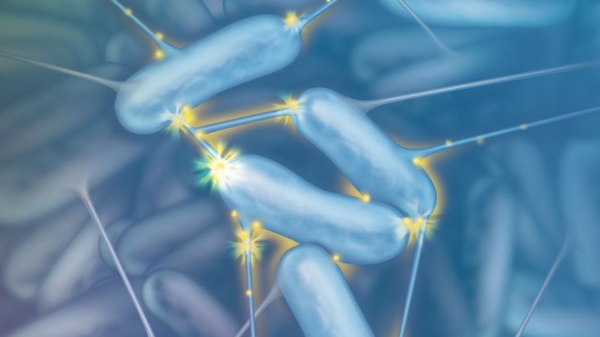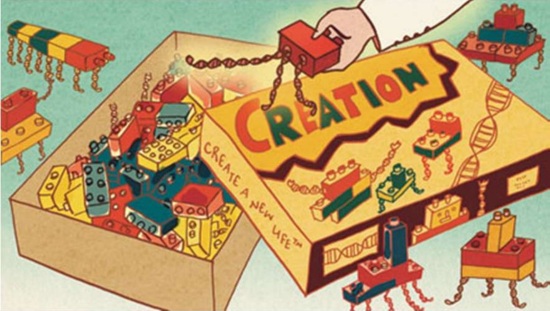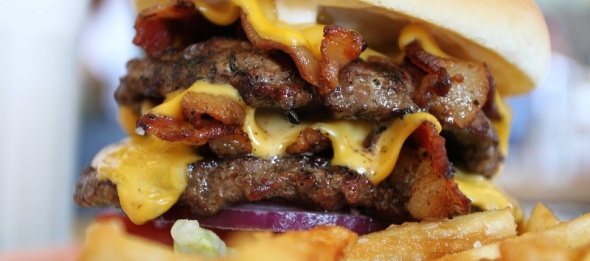Body heat as a power source
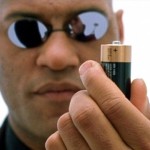
Electronics integrated into textiles are gaining in popularity: Systems like smartphone displays in a sleeve or sensors to detect physical performance in athletic wear have already been produced. The main problem with these systems tends to be the lack of a comfortable, equally wearable source of power. Chinese scientists are now aiming to obtain the necessary energy from body heat by introducing a flexible, wearable thermocell based on two different gel electrolytes.
Next steps in understanding brain function

The most complex piece of matter in the known universe is the brain. Neuroscientists have recently taken on the challenge to understand brain function from its intricate anatomy and structure. There is no sure way to go about it, and researchers in Madrid proposed a solution to the problem.
Organic computers are coming

Move over silicon, tomorrow’s computers could be made of something completely different. A team of international researchers managed to find a molecule that, to their opinion, could give the impetus to the development of organic electronics.
Stem cells feel the force
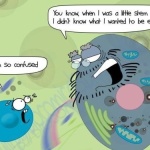
All cells share the same genetic code, no matter if they are skin or brain cells. However, these cells are exposed to very different types of mechanical environments and mechanical stresses. For example, brain tissue is very soft, whereas bone is hard. Researchers know that cells respond to extrinsic forces by changing their structure and their gene expression to be better suited for their particular environments and to be able to execute their specific functions.
A new bio-ink for 3-D printing with stem cells

The new stem cell-containing bio ink allows 3D printing of living tissue, known as bio-printing. The new bio-ink contains two different polymer components: a natural polymer extracted from seaweed, and a sacrificial synthetic polymer used in the medical industry, and both had a role to play.
Researchers show copper is essential for burning fat

Is copper deficiency contributing to the obesity epidemic? Though small amounts of copper are essential to health – oysters, liver, beans and nuts are good sources – copper’s role in metabolism has been unclear: Some studies found that it boosted fat burning, others that it depressed it.
Mobilizing mitochondria may be key to regenerating damaged neurons

Mitochondria, sure it’s the powerhouse of the cell, but maybe it can be much more that. At least that’s what it looks like thanks to researchers at the National Institute of Neurological Disorders and Stroke who have discovered that boosting the transport of mitochondria along neuronal axons enhances the ability of mouse nerve cells to repair themselves after injury.
The truth is out there: Scientists unlock X-Files DNA mystery


Scientists have unlocked a crucial part of the mystery as to how our DNA can replicate and repair itself – something which is essential for all life forms. The new research has revealed how branched DNA molecules are removed from the iconic double-helical structure -a process which scientists have been looking to unlock for over 20 years.
Bacteria in branches naturally fertilize trees

The bacteria in and on our bodies have been shown to be vital for human health, influencing nutrition, obesity and protection from diseases. But science has only recently delved into the importance of the microbiome of plants. Since plants can’t move, they are especially reliant on partnerships with microbes to help them get nutrients.
Organic nanowires destroy the competition
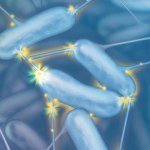
Last month, we spoke of our vision of the future of humanity here at the lab. It makes sense that humanity would one-day step away from the static, non-living computer constructs we have designed. Moving us instead towards an organic alternative, one that can be readily repaired, replaced, or changed. While we cannot pretend to know what the future may hold, a new discovery helps bolster the stance we presented.
Some bacterial CRISPRs can snip RNA, too

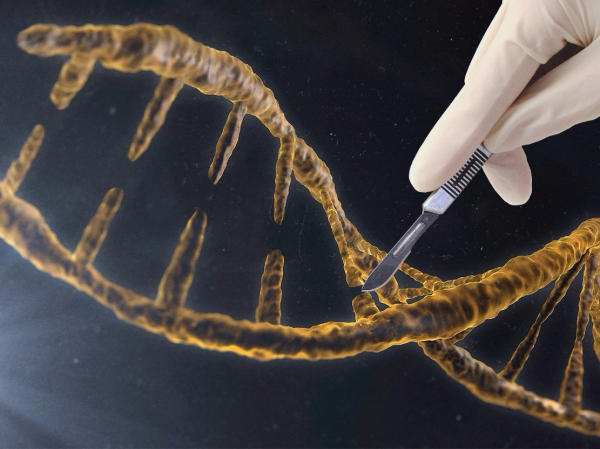
You’ve probably seen news stories about the highly lauded, much-discussed genome editing system CRISPR/Cas9. But did you know the system was actually derived from bacteria, which use it to fight off foreign invaders such as viruses? It allows many bacteria to snip and store segments of DNA from an invading virus, which they can then use to “remember” and destroy DNA from similar invaders if they are encountered again. Recent work from a team of researchers including Carnegie’s Devaki Bhaya demonstrates that some bacteria also use the CRISPR/Cas system to snip and recognize segments of RNA, not just DNA.
Technology and human biology: The singularity may not be so singular

Life literally inside the world wide web, it’s an interesting idea. One that has tantalized sci-fi fans since before the framework for the internet was even finished. While the idea of a seemingly eternal disembodied life through the unfiltered and raw computer consciousness that we all share a connection with, maybe we are shooting for a goal that isn’t really possible — maybe we are asking the wrong questions.
Predicting what side effects you’ll experience from a drug
Researchers at the University of California, San Diego have developed a model that could be used to predict a drug’s side effects on different patients. The proof of concept study is aimed at determining how different individuals will respond to a drug treatment and could help assess whether a drug is suitable for a particular patient based on measurements taken from the patient’s blood.
You too can learn to farm on Mars!
Scientists at Washington State University and the University of Idaho are helping students figure out how to farm on Mars, much like astronaut Mark Watney, played by Matt Damon, attempts in the critically acclaimed movie “The Martian.” Washington State University physicist Michael Allen and University of Idaho food scientist Helen Joyner teamed up to explore the challenge. Their five-page study guide was published the day the movie premiered earlier this month.
Scientists discover new system for human genome editing

CRISPR systems help bacteria defend against viral attack (shown here).
These systems have been adapted for use as genome editing tools in
human cells.
Image credit goes to: Ami Images/Science Photo Library.
A team including the scientist who first harnessed the revolutionary CRISPR-Cas9 system for mammalian genome editing has now identified a different CRISPR system with the potential for even simpler and more precise genome engineering. In the study researchers describe the unexpected biological features of this new system and demonstrate that it can be engineered to edit the genomes of human cells.
Cellular zombies: Mutant cells that can’t copy DNA keep dividing when they shouldn’t
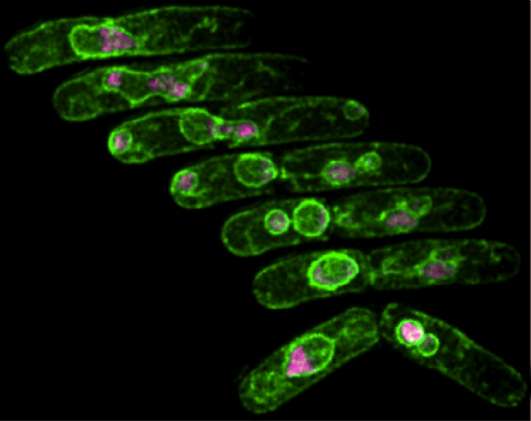
Sequential images of abnormal divisions in a mutant cell leading to abnormal nuclei and chromosome rearrangement. Chromosomes are displayed in pink, cell membranes in green. The cell undergoes two aberrant divisions.
Image credit goes to: Susan Forsburg
Researchers at USC have developed a yeast model to study a gene mutation that disrupts the duplication of DNA, causing massive damage to a cell’s chromosomes, while somehow allowing the cell to continue dividing.
Paralyzed men move legs with new non-invasive spinal cord stimulation

This image shows the range of voluntary movement prior to receiving stimulation compared to movement after receiving stimulation, physical conditioning, and buspirone. The subject’s legs are supported so that they can move without resistance from gravity. The electrodes on the legs are used for recording muscle activity.
Image credit goes to: Edgerton lab/UCLA
Five men with complete motor paralysis were able to voluntarily generate step-like movements thanks to a new strategy that non-invasively delivers electrical stimulation to their spinal cords. The strategy, called transcutaneous stimulation, delivers electrical current to the spinal cord by way of electrodes strategically placed on the skin of the lower back.
Novel DNA repair mechanism brings new horizons

Estimated structure of the nucleosomal DNA loops, which are temporarily formed during transcription of chromatin containing intact DNA by RNA polymerase II (Pol II). In the presence of a single-strand DNA break, the loop structure likely changes, preventing rotation of the RNA polymerase along the DNA helix (orange arrow).
Image credit goes to: Nadezhda S. Gerasimova et al
The DNA molecule is chemically unstable giving rise to DNA lesions of different nature. That is why DNA damage detection, signaling and repair, collectively known as the DNA damage response, are needed. A group of researchers discovered a new mechanism of DNA repair, which opens up new perspectives for the treatment and prevention of neurodegenerative diseases.
Synthetic biology used to engineer new route to biochemicals

Living cells can make a vast range of products for us, but they don’t always do it in the most straightforward or efficient way. Shota Atsumi, a chemistry professor at UC Davis, aims to address that through “synthetic biology:” designing and building new biochemical pathways within living cells, based on existing pathways from other living things.
What your clothes may say about you
Moving closer to the possibility of “materials that compute” and wearing your computer on your sleeve, researchers at the University of Pittsburgh Swanson School of Engineering have designed a responsive hybrid material that is fueled by an oscillatory chemical reaction and can perform computations based on changes in the environment or movement, and potentially even respond to human vital signs. The material system is sufficiently small and flexible that it could ultimately be integrated into a fabric or introduced as an inset into a shoe.
Hormone that differentiates sugar, diet sweeteners could exist in humans
We’ve all been there: We eat an entire sleeve of fat-free, low-calorie cookies and we’re stuffing ourselves with more food 15 minutes later. One theory to explain this phenomenon is that artificial sweeteners don’t contain the calories or energy that evolution has trained the brain to expect from sweet-tasting foods, so they don’t fool the brain into satisfying hunger. However, until now, nobody understood how organisms distinguish between real sugar and artificial sweetener.
Milk proteins may protect against cardiovascular disease
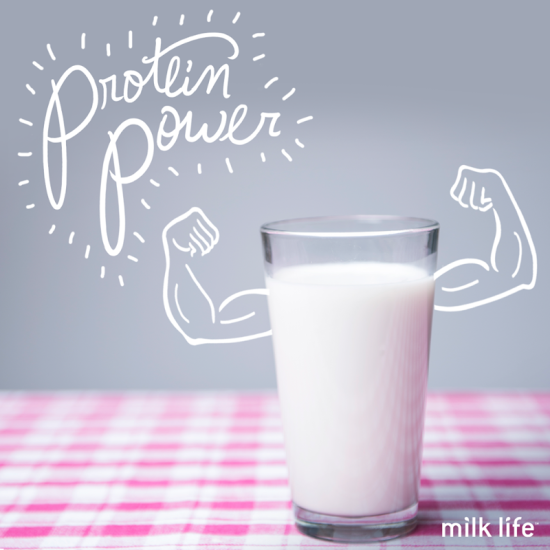 The Maillard reaction is a chemical reaction between amino acids and reducing sugars that results in browned foods like seared steaks and toasted bread. When proteins and sugars are mixed together and heated, new chemical compounds are formed. Some are responsible for new flavors and some, according to a new study, may protect us against cardiovascular disease. (more…)
The Maillard reaction is a chemical reaction between amino acids and reducing sugars that results in browned foods like seared steaks and toasted bread. When proteins and sugars are mixed together and heated, new chemical compounds are formed. Some are responsible for new flavors and some, according to a new study, may protect us against cardiovascular disease. (more…)
GMO beef with the heart benefits of fish, why not?
Sometimes you just want beef, but beef is high in omega-6 fatty acids and low in the omega-3 type. Conversely, different types of fish are high in omega-3, but we all know they don’t compare to that tasty burger flavor. So what’s a beef lover to do, well if you’re in China you might have some options! Chinese scientists have reared beef rich in the beneficial fatty acids associated with fish oils.
Fatal attraction: the intuitive appeal of GMO opposition
A team of Belgian philosophers and plant biotechnologists have turned to cognitive science to explain why opposition to genetically modified organisms (GMOs) has become so widespread, despite positive contributions GM crops have made to sustainable agriculture. They argue that the human mind is highly susceptible to the negative and often emotional representations put out by certain environmental groups and other opponents of GMOs. The researchers urge the general public to form opinions on GMOs on a case-by-case basis, thereby not focusing on the technology but on the resulting product.









